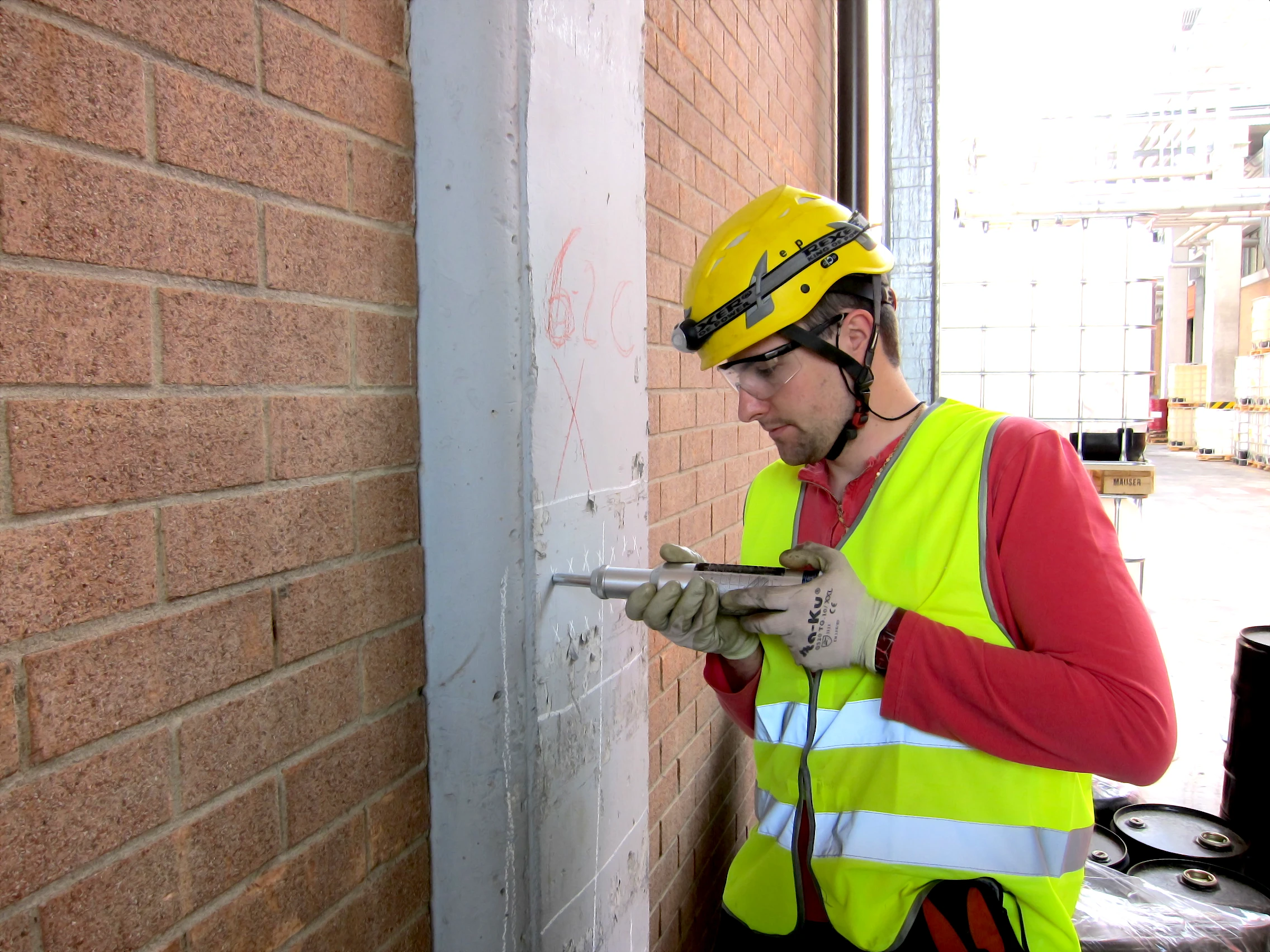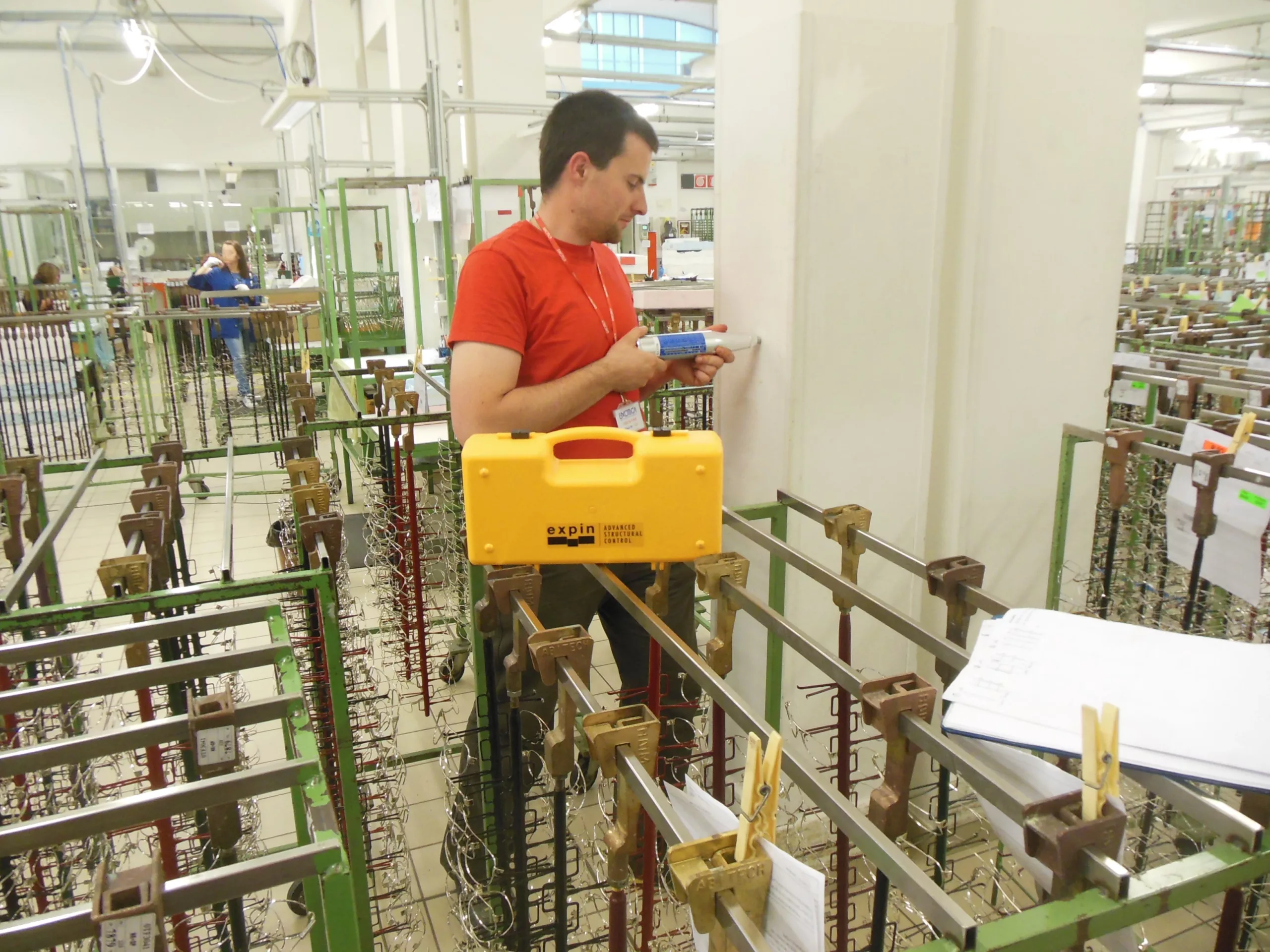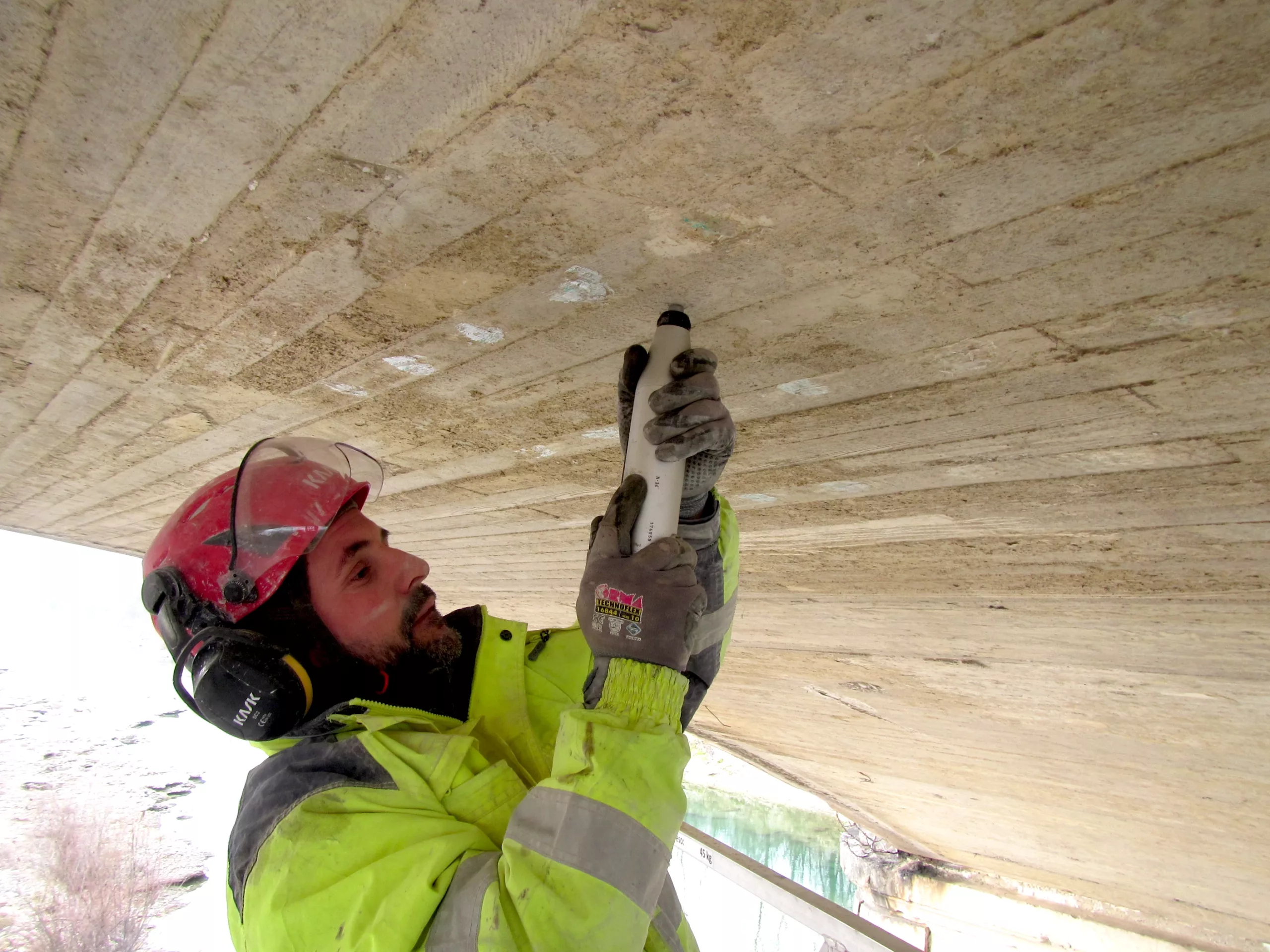


Concrete rebound hammer test
The method is used to estimate the hardened concrete strength class, to investigate the conglomerate homogeneity, outline zones or areas of poor quality or degraded. This methodology is not, however, intended as a substitute of the compression test on concrete specimens. The testing equipment, called sclerometer, consists of a cylindrical body equipped with a rod that protrudes from one end of the casing and is loaded by a spring. The rod is pressed on the surface to be tested until it reaches the limit of its stroke. An internal mass hits the ring nut rigidly fixed to the rod, which in turn is in contact with the surface under test. The mass, after hitting the rod, bounces to a certain height shown by an index placed on a graduated scale. The rebound height is proportional to the surface hardness of the concrete and from this, through empirical correlations, the concrete strength class is estimated.
Reference standard: UNI EN 12504-2:2021
